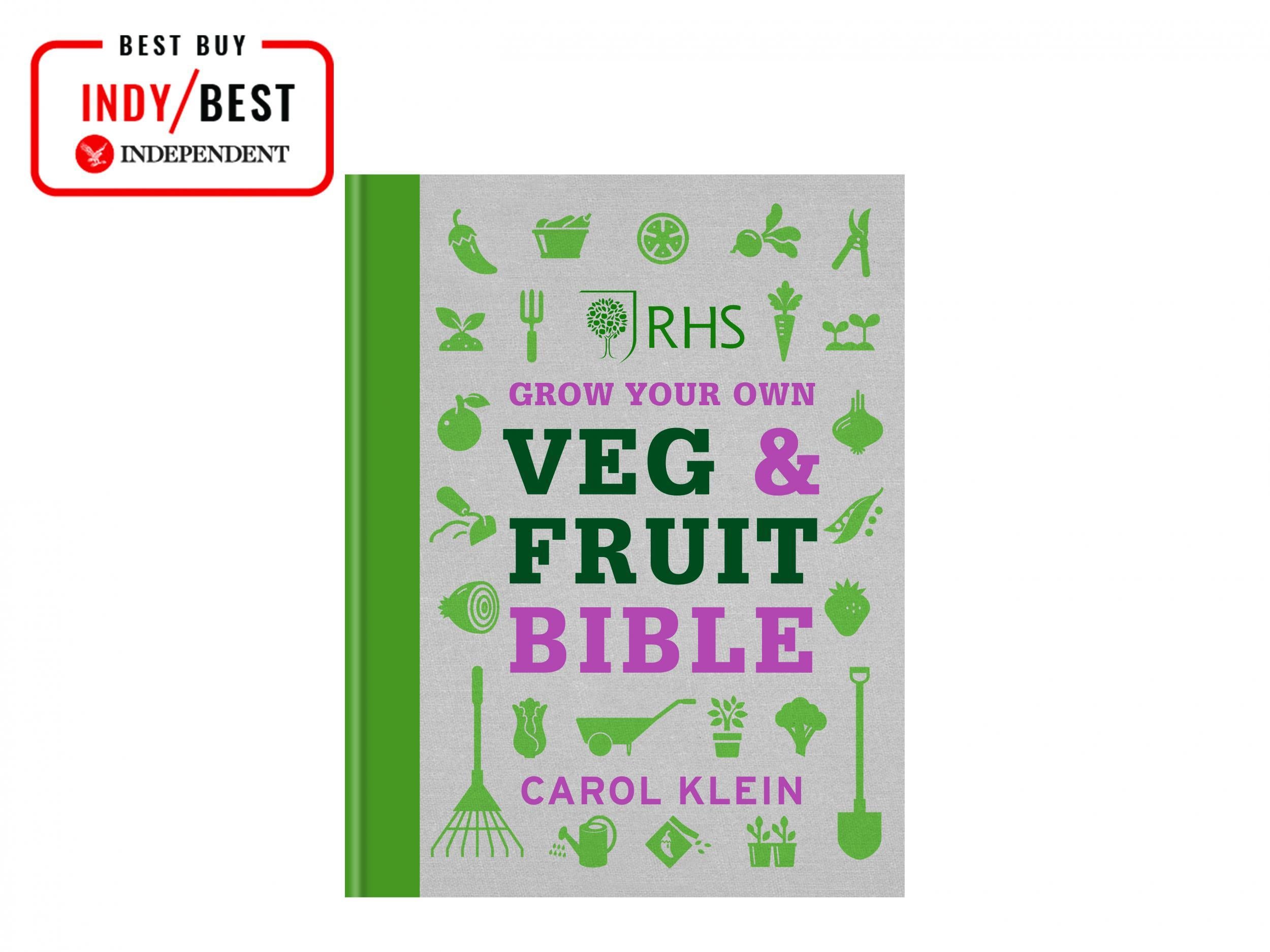
The Independent's journalism is supported by our readers. When you purchase through links on our site, we may earn commission. Why trust us?
8 best books for growing your own fruit and vegetables: Helpful guides for every type of space
Whether you have an allotment, garden, balcony, or windowsill, these reads will help you to become green-fingered and self-sufficient in no time
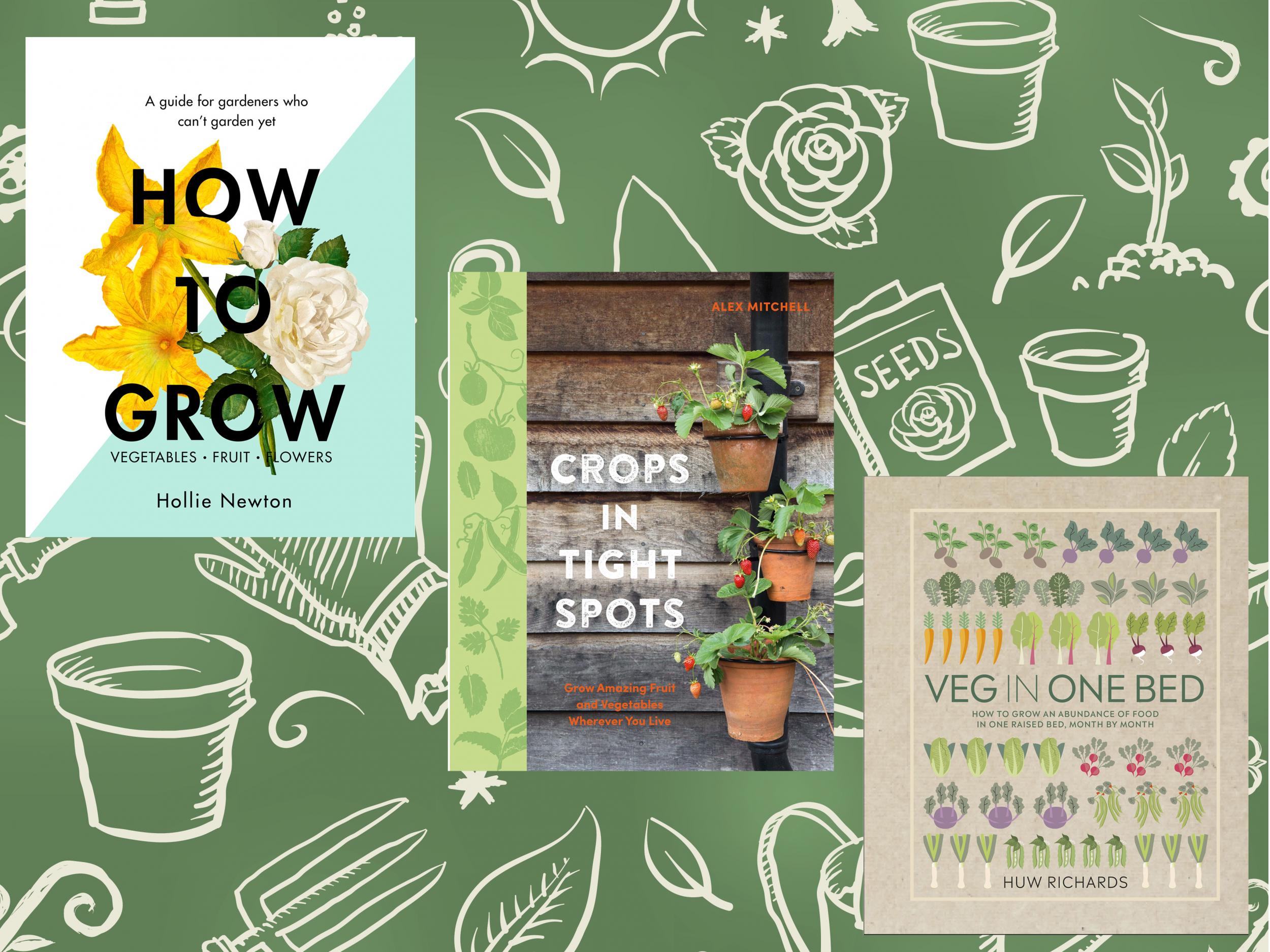
- 1
 ‘RHS Grow Your Own Veg & Fruit Bible’ by Carol Klein, published by Mitchell BeazleyRead review£192
‘RHS Grow Your Own Veg & Fruit Bible’ by Carol Klein, published by Mitchell BeazleyRead review£192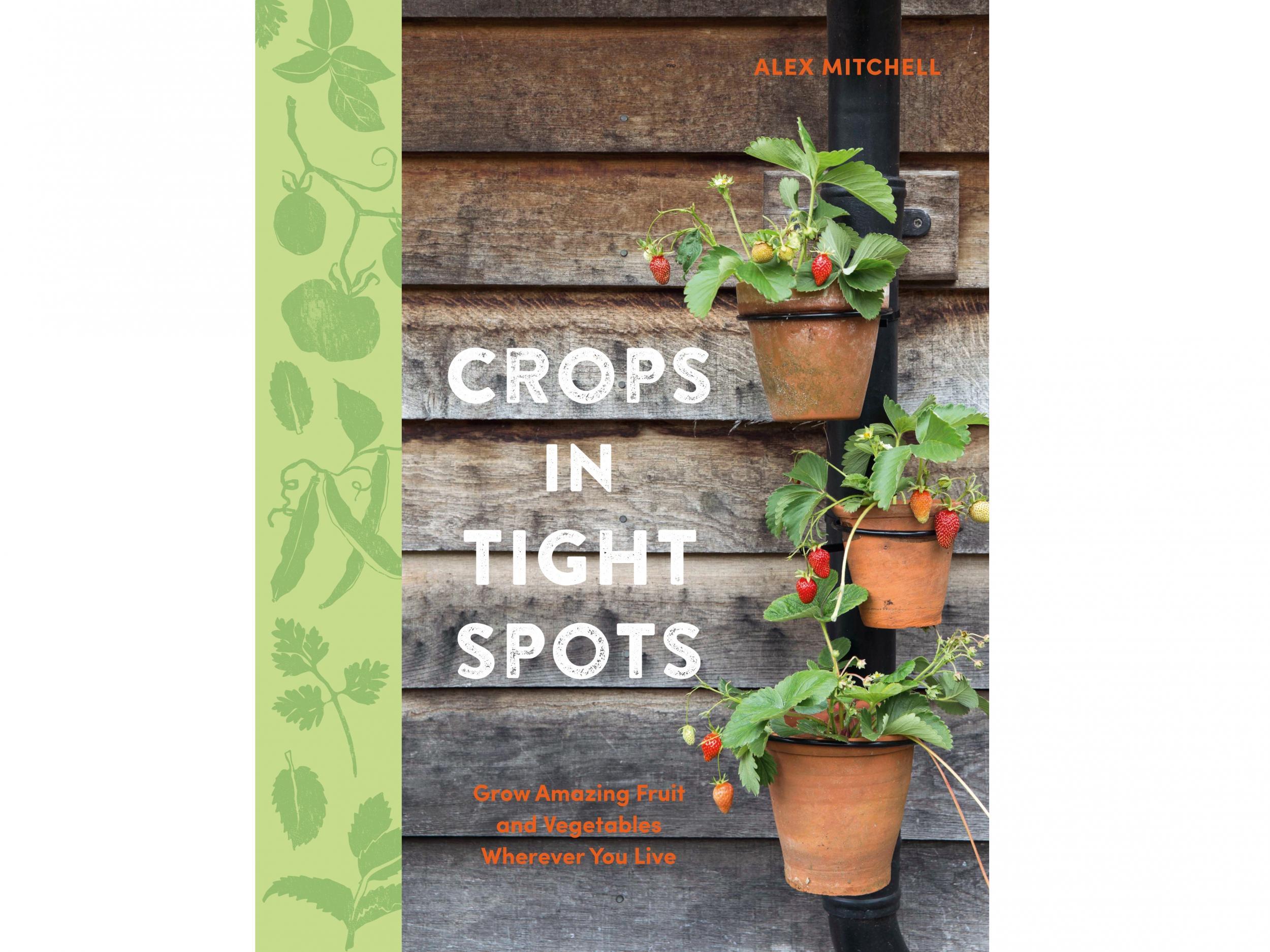 ‘Crops in Tight Spots: Grow Amazing Fruit and Vegetables Wherever You Live’ by Alex Mitchell, published by Kyle BooksRead review£15
‘Crops in Tight Spots: Grow Amazing Fruit and Vegetables Wherever You Live’ by Alex Mitchell, published by Kyle BooksRead review£15 - 3
 ‘Grow For Flavour: Tips and Tricks to Supercharge the Flavour of Homegrown Harvests’ by James Wong, published by OctopusRead review£94
‘Grow For Flavour: Tips and Tricks to Supercharge the Flavour of Homegrown Harvests’ by James Wong, published by OctopusRead review£94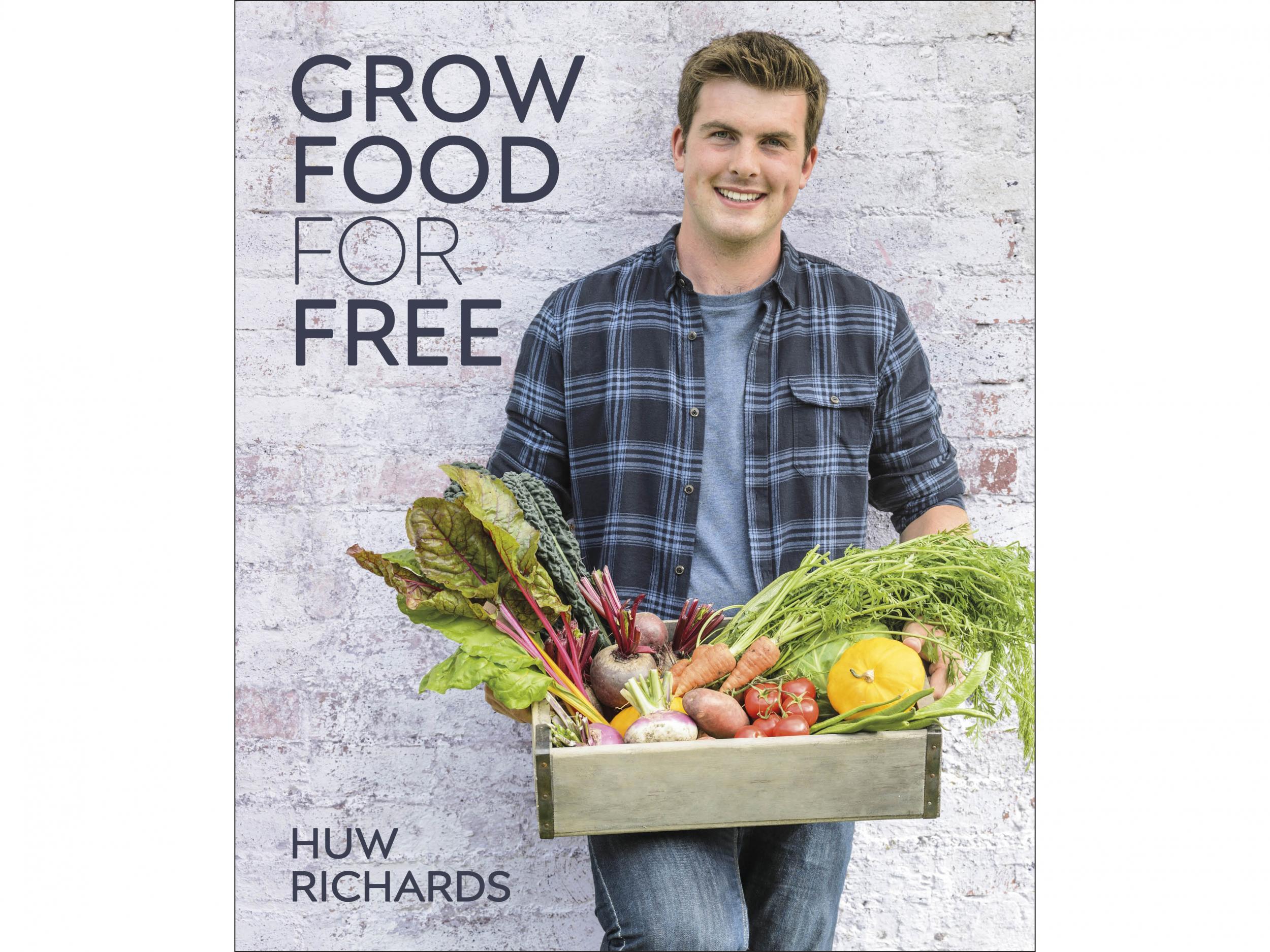 ‘Grow Food For Free: The Easy Sustainable Zero-cost way to a Plentiful Harvest’ by Huw Richards, published by DKRead review£8
‘Grow Food For Free: The Easy Sustainable Zero-cost way to a Plentiful Harvest’ by Huw Richards, published by DKRead review£8 - 5
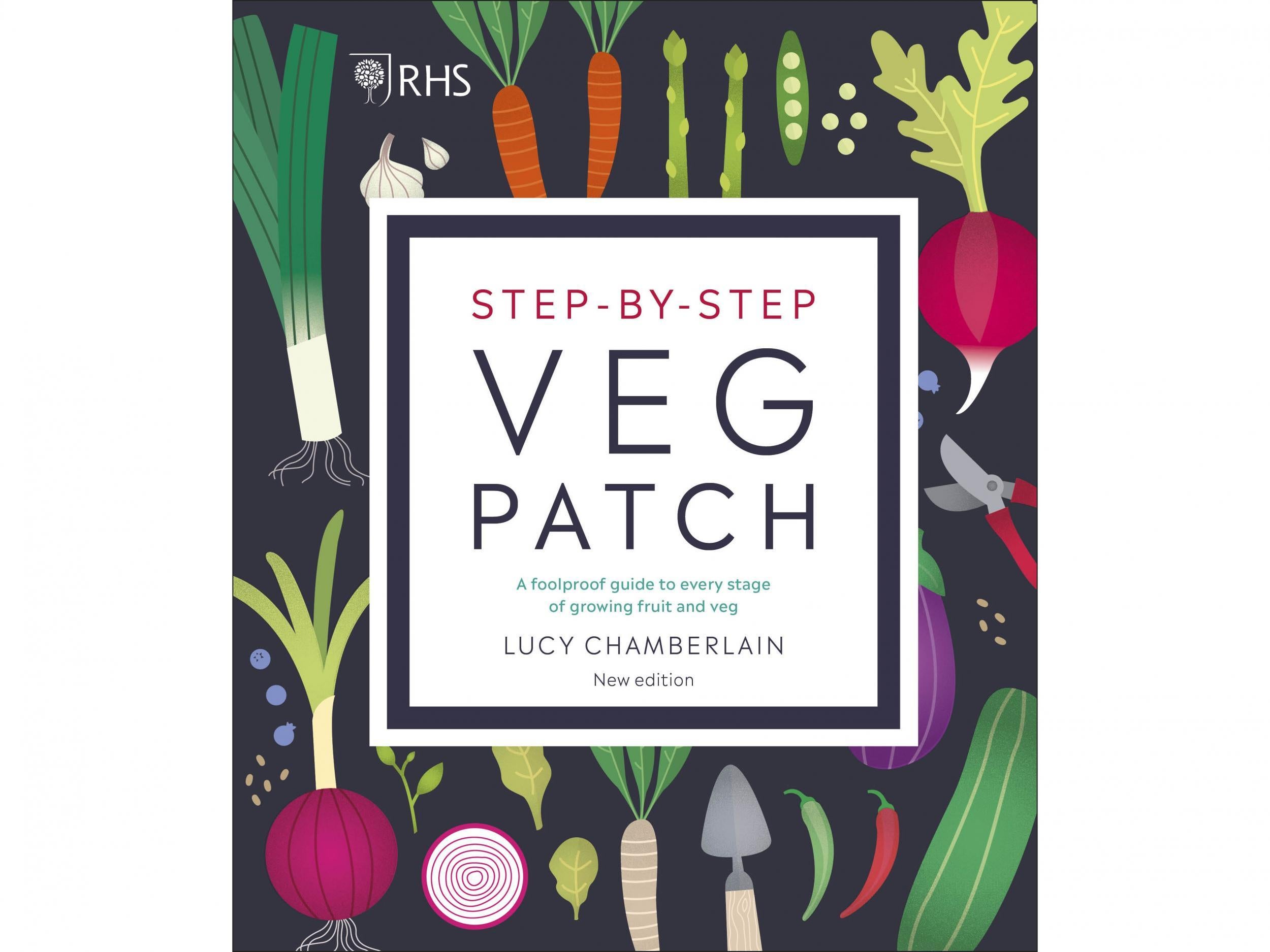 6
6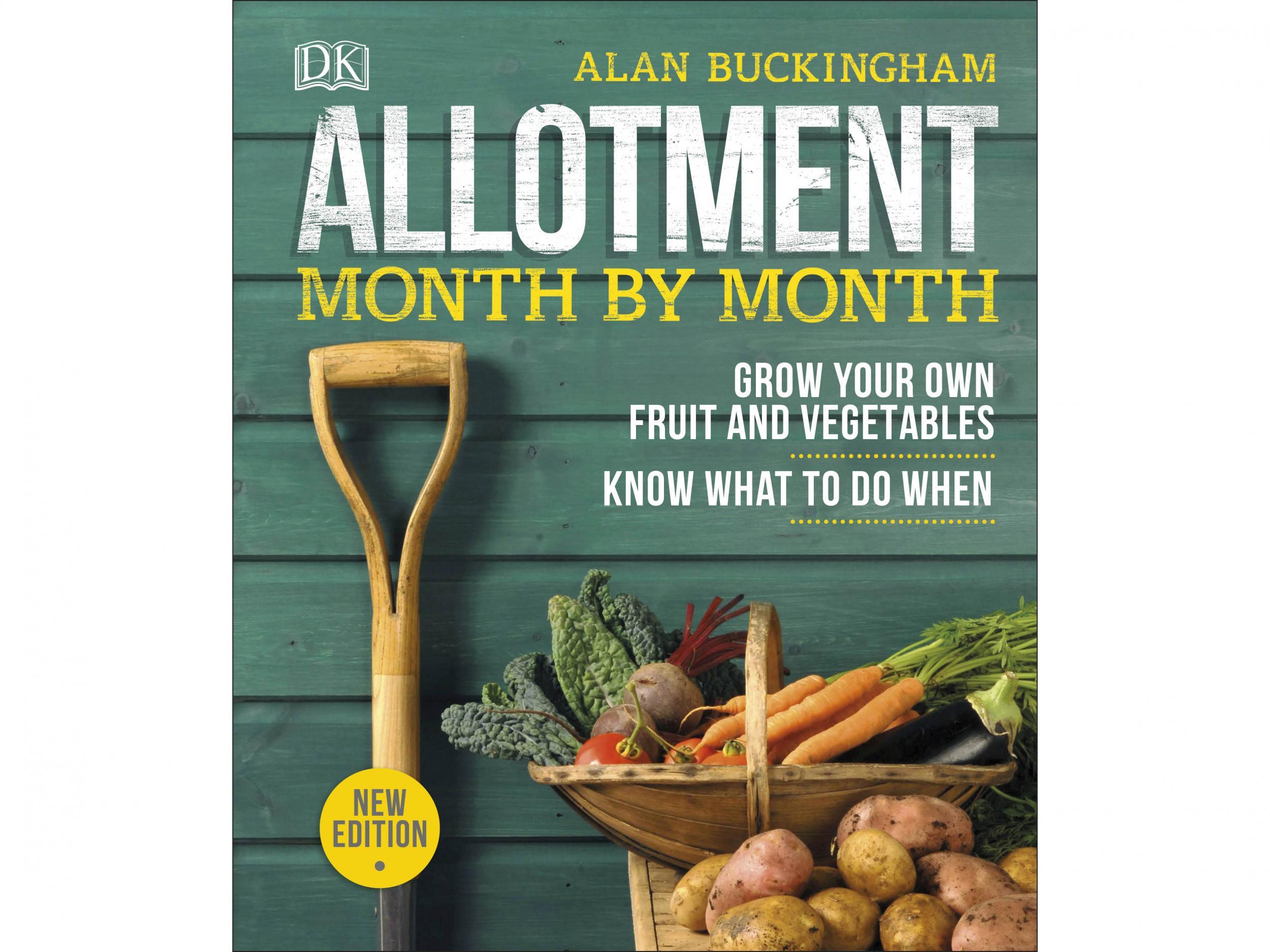 ‘Allotment Month by Month: Grow your own Fruit and Vegetables, Know What to do When’ by Alan Buckingham, published by DKRead review£13
‘Allotment Month by Month: Grow your own Fruit and Vegetables, Know What to do When’ by Alan Buckingham, published by DKRead review£13 - 7
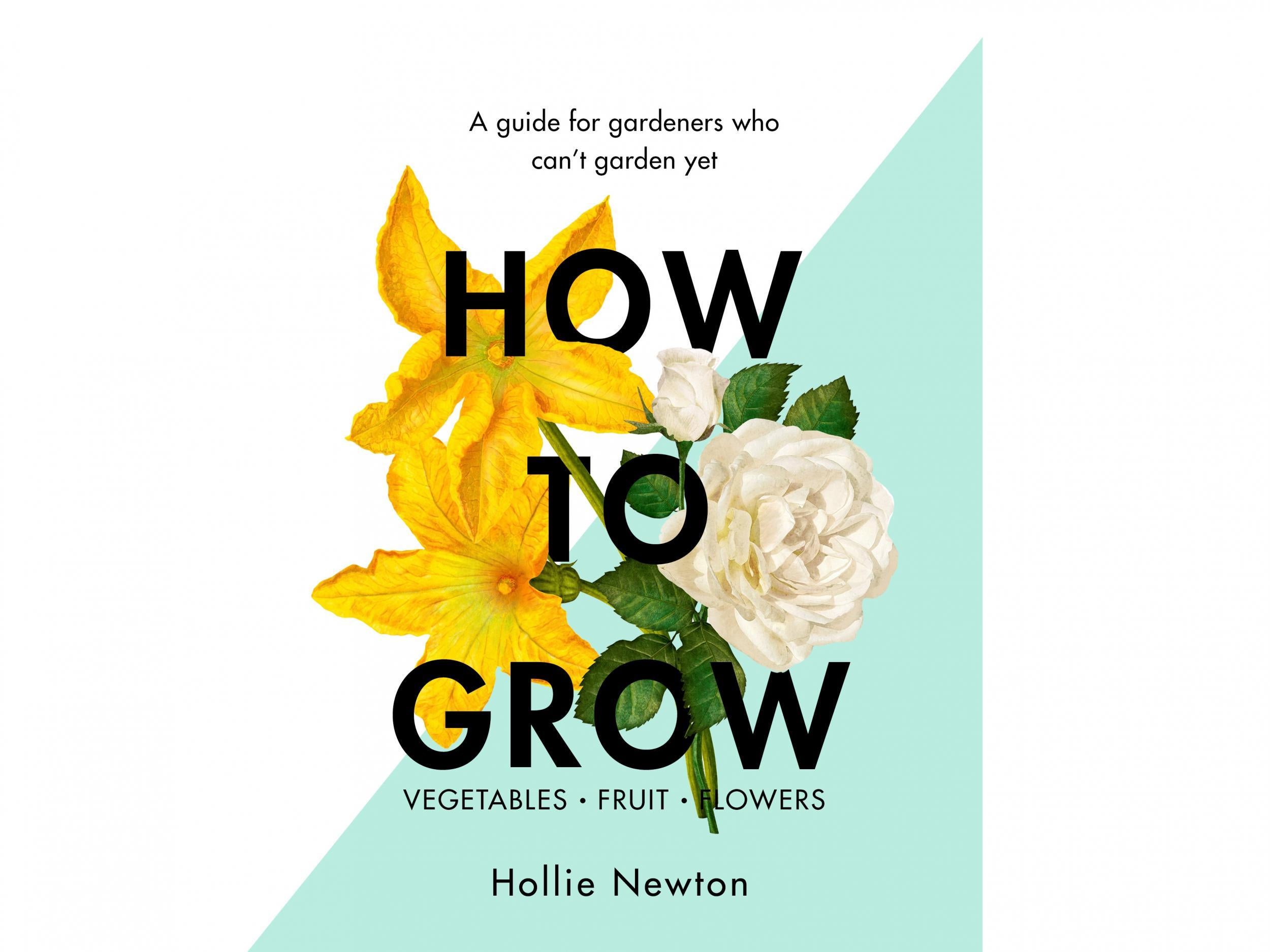 ‘How to Grow: A guide for gardeners who can’t garden yet’ by Hollie Newton, published by Orion SpringRead review£128
‘How to Grow: A guide for gardeners who can’t garden yet’ by Hollie Newton, published by Orion SpringRead review£128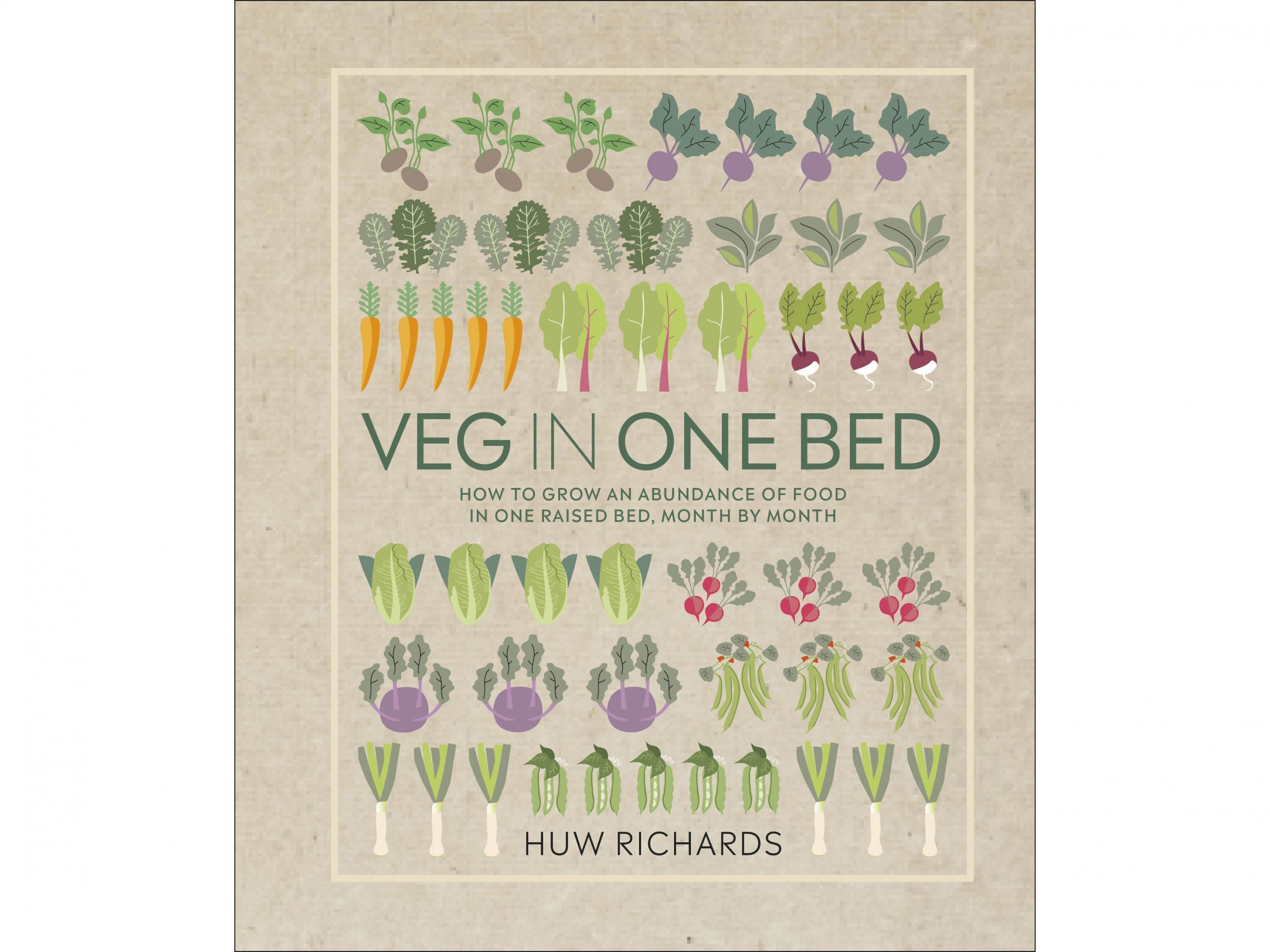 ‘Veg in One Bed: How to Grow an Abundance of Food in One Raised Bed, Month by Month’ By Huw Richards, published by DKRead review£16
‘Veg in One Bed: How to Grow an Abundance of Food in One Raised Bed, Month by Month’ By Huw Richards, published by DKRead review£16
It’s hardly surprising home-grown fruit and vegetables can taste a million times more flavoursome than their shop-bought counterparts.
It’s fresher, as it doesn’t have to go through the often lengthy transportation process that supermarket produce does, and growing your own gives you complete control over the use of pesticides or fertilisers.
Taste factors aside, growing your own also harbours many additional benefits, from promoting positive mental health to helping you to keep active. It's no wonder many of us have chosen to embrace the greener sides of life, particularly since lockdown.
While the idea of growing your own can be exciting in principle, it can equally be daunting, particularly for beginners, which is where well-researched guides, written by experts, come into their own.
Here, we’ve tested a variety of gardening and growing-your-own books, compiled by gardening writers, bloggers and industry experts alike.
Quite simply, we were looking for books which laid out the main tenets of growing fruit and vegetables clearly and simply. While we were after informative titles, we were also keen to avoid text-heavy tomes in favour of at-a-glance reads which can be consulted as and when.
Finally, we were interested in finding books which were illustrated with high res imagery and diagrams because, let’s face it, when growing your own, nobody wants to eat weeds!
You can trust our independent reviews. We may earn commission from some of the retailers, but we never allow this to influence selections, which are formed from real-world and expert advice. This revenue helps us to fund journalism across The Independent.
1‘RHS Grow Your Own Veg & Fruit Bible’ by Carol Klein, published by Mitchell Beazley

Featuring environmentally-friendly methods for growing more than 75 fruit and vegetables, this is a must-have for gardening novices and pros alike. The 416-page book covers basics such as tending to fruit and vegetables in small spaces, creating raised beds, making container gardens, protecting tender plants and improving soil. It also catalogues how to grow a whole host of produce, with advice on where, when and how to cultivate each ingredient. Information is laid out in a practical and digestible way, and text is broken up with helpful imagery. One for the coffee table; it’s as aspirational as it is practical.
2‘Crops in Tight Spots: Grow Amazing Fruit and Vegetables Wherever You Live’ by Alex Mitchell, published by Kyle Books

Don’t let being short of outdoor space, time or experience put you off growing fruit and vegetables. From ledges and sills to terraces and courtyards and roofs and balconies, this colourful book from writer and gardener Alex Mitchell identifies a whole host of small spaces where you can grow your own. We particularly enjoyed the focus on top indoor crops – think microgreens, herbs, baby salad leaves and even mushrooms under the bed – and the chapter on “Other Awkward Spots” where Alex illustrates how you can design an edible Eden using steps, corners, alleys and walls.
3‘Grow For Flavour: Tips and Tricks to Supercharge the Flavour of Homegrown Harvests’ by James Wong, published by Octopus

In this informative book, Kew-trained botanist and bestselling writer James Wong applies a scientific approach to gardening, revealing how to grow what he claims to be tomatoes with 50 per cent more vitamin C and chillies with double the heat thanks to a combination of sunlight, watering, enhancing soil and keeping pests at bay. Grow For Flavour is filled with interesting titbits, illustrations and photos as well as 36 fun and inventive recipes to try at home; think one-pot tomato leaf pasta and homemade cherryade – yum!
4‘Grow Food For Free: The Easy Sustainable Zero-cost way to a Plentiful Harvest’ by Huw Richards, published by DK

If you’re hoping to set up your own fruit and veg supply, this book from self-sufficiency pioneer Huw Edwards is wonderfully insightful. From the necessary tools to creating raised beds and sowing, harvesting and storing produce, Grow Food for Free covers all the basics to get you started, but with an added twist – the idea is to borrow, swap, share or make your own resources where possible, without having to spend a penny. Overall, the book is wonderfully resourceful and particularly relevant in the current climate.
5‘RHS Step-by-Step Veg Patch’ by Lucy Chamberlain, published by DK

In the first instance, growing your own can seem slightly overwhelming, but taking a read of Step-by-Step Veg Patch will assuage any anxieties. From getting started with basics such as tomatoes to migrating to more advanced ingredients, this book covers all the essentials and information is laid out in easy-to-read at-a-glance sections. You’ll also find handy diagrams covering when to sow and harvest, harvest lengths, and how to plant your desired ingredients in the ground and in containers.
6‘Allotment Month by Month: Grow your own Fruit and Vegetables, Know What to do When’ by Alan Buckingham, published by DK

Covering more than 60 crops, this book provides a month-by-month breakdown of what to do when. From digging over your plot in January to sowing and planting in February, it can be used as a to-do list to inform your growing and harvesting. On top of an annual overview of things to do, there’s also a “crop planner” chapter which covers how to grow a number of ingredients in a handy at-a-glance fashion.
7‘How to Grow: A guide for gardeners who can’t garden yet’ by Hollie Newton, published by Orion Spring

From its jazzy jacket to trendy minimalist design inside, How to Grow is one for green-fingered millennials. Written by self-taught gardener Hollie Newton in her pint-sized London garden, this book will inspire avid gardeners to grow their own, no matter what space they’re working with. On top of being practical, it’s an enjoyable – and funny – read.
8‘Veg in One Bed: How to Grow an Abundance of Food in One Raised Bed, Month by Month’ By Huw Richards, published by DK

As this guide outlines, when it comes to growing your own, there is no need to be disheartened by a lack of space. Whether you have a small plot of land or simply a balcony, this helpful book lays out how to create a verdant spot which can be harvested for produce month after month. The author's diagrams, which denote what jobs need doing when to maintain your crops, are fantastic visual aids and information is handily divided into sections according to whether you are using raised beds or windowsills to cultivate your crops.
The verdict: Best books for growing your own veg
We’ve awarded our best buy to Carol Klein’s RHS Grow Your Own Veg & Fruit Bible. As practical as it is enjoyable, it’s a fantastic coffee-table style compendium covering all things horticultural. For modern and inventive approaches to growing your own, we also love Hollie Newton’s How to Grow and James Wong’s Grow For Flavour.